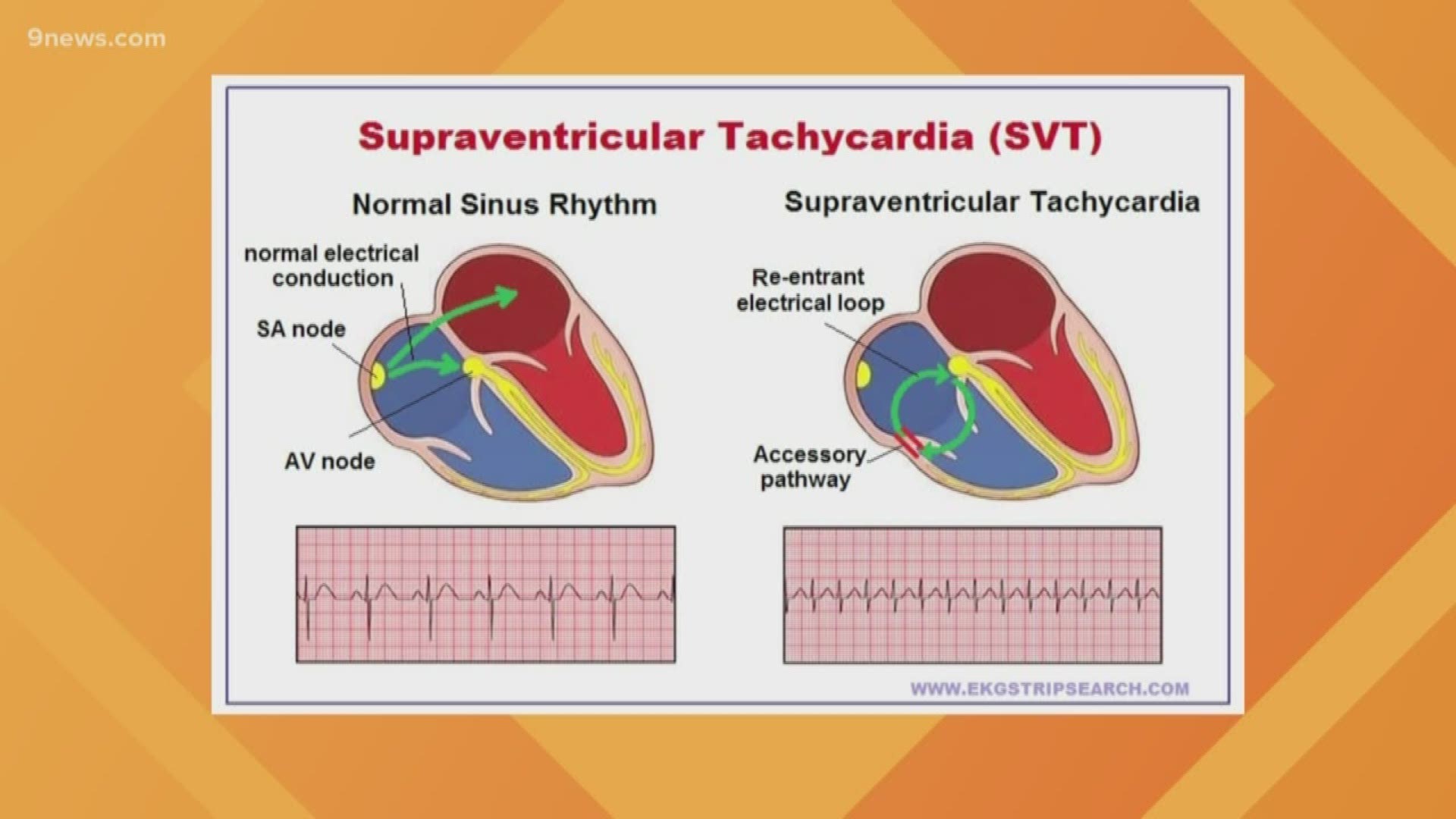DENVER — Heart disease in young people is certainly possible.
Supraventricular tachycardia (SVT) can affect kids, adolescents and young adults. It occurs in about 2 out of every 1,000 people.
SVT refers to an “arrhythmia” or abnormal heart rhythm that comes on suddenly and can cause some distressing symptoms.
Patients with SVT account for approximately 50,000 emergency room visits each year.
9NEWS Health Expert Dr. Payal Kohli answers questions associated with SVT below.
What is a SVT?
Normally, our heart rate is regulated by a complex electrical system in the heart where the electrical impulses “pause” when going from the top to the bottom chamber. Occasionally, a heartbeat will come “early” and this can trigger an electrical short circuit in the heart, which is what causes an SVT. So, if the regular electrical signals were stopping at the traffic light before merging onto the highway, the SVT signal are using the express lane to get on the highway without stopping. This short circuit raises the heart rate suddenly from the resting rate of 60-100 bpm to >100 bpm.
Triggers for SVT can be anything that increases the irritability of the electrical system (and opens up that “expressway”) of the heart, including caffeine, stress, exercise, thyroid disease or pregnancy. Some episodes, however, are triggered without any obvious cause and can even wake you up from sleep. And for those who have no obvious triggers, preventing the SVT can be challenging.
How do you know if you’re having a SVT?
SVT is not subtle. People usually know from one second to the next if they are having a SVT because the heart rate will suddenly increase without another good explanation (such as exercise, climbing stairs, etc). If you have a SVT, it can be frightening and you can feel a sudden onset of anxiety, a rapid heartbeat or palpitations, shortness of breath, dizziness, chest pain and rarely, loss of consciousness. Usually, a SVT is not life-threatening, but occasionally, if the arrhythmia is sustained it can cause significant complications that can be serious.
How is SVT treated?
Treatment strategies depend on how frequently the symptoms occur and how severe they are. Often times, one can “break” the attack by bearing down, blowing on your thumb or putting your face in ice water, as these maneuvers release chemicals that slow the heart rate. If this is not effective, your doctor may give you a “pill in the pocket” (usually a medication called a beta-blocker) or a daily medication. You may also have to get an injection medication in the emergency room (called adenosine) to stop the arrhythmia. In rare cases, doctors may have to shock your heart back into the normal rhythm. For certain people with frequent symptoms, an “ablation” can be done to permanently close off that expressway and prevent recurrence of symptoms.
The definition of heart disease encompasses so much more than just the blockages in these arteries that cause heart attacks and can also represent electrical problems with the heart (called arrhythmias) or problems with the pumping function of the heart (called heart failure).
SUGGESTED VIDEOS | Science is Cool

